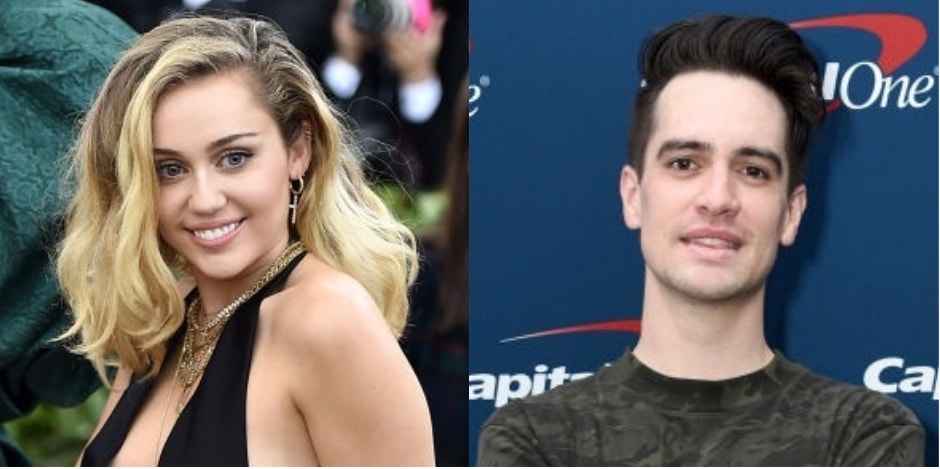The Truth About What Being Pansexual Means
It is not equivalent to bisexuality, because it’s broader in scope.
 getty
getty Pansexuality as a concept goes back to the time of Freud, but has achieved new currency as celebrities and an increasing number of millennial youth have claimed a pansexual identity. Whether it connotes a sexual/romantic orientation in addition to an identity is unclear; who is pansexual rests on a proverbial slippery slope.
Pansexual could refer to someone who is sexually and/or romantically attracted to a person regardless of that person’s biological sex — It’s not their biological equipment that is most critical. Sociologist Emily Lenning expanded the pansexual definition by centrally including gender. Hence, pansexuality is “a sexual attraction to all people, regardless of their gender identity or biological sex.” Others extend even this broad definition by delineating pansexuality as being not about the sexual equipment of the individual or how feminine or masculine the individual is or feels (gender identity), but about the person as an individual — inclusive of just about anything.
As a working definition, though, most researchers would follow Morandini and colleagues:
“Pansexual is often conceptualized as a label that denotes sexual or romantic attraction to people regardless of their gender expression (masculinity or femininity), gender identity, or biological sex.”
They reported that among nonheterosexual pansexual individuals, five times more women than men identified as pansexual. Also more likely to identify as pansexual were nonheterosexuals from younger generations and those who have a gender identity, gender expression, or gender role that society considers inappropriate for the sex one was assigned at birth (aka “noncisgender”). Finally, pansexual individuals “overwhelmingly represented their sexual/romantic attractions as falling within the bisexual range of the sexual continuum.”
This last point has been problematic for many, including the singer/actress Miley Cyrus, who recently came out as pansexual.
In a 2016 interview with Variety, she said:
"I always hated the word ‘bisexual,’ because that’s even putting me in a box. I don’t ever think about someone being a boy or someone being a girl… My eyes started opening in the fifth or sixth grade. My first relationship in my life was with a chick… I saw one human in particular who didn’t identify as male or female. Looking at them, they were both: beautiful and sexy and tough but vulnerable and feminine but masculine. And I related to that person more than I related to anyone in my life."
I agree that we should be very careful to distinguish pansexual from bisexual individuals, even though many pansexuals have “bisexual” attractions and behaviors. However, as Morandini and colleagues pointed out, pansexuality per se “explicitly rejects attractions based on binary notions of sex (male versus female) and gender (man versus woman).” Lenning noted, “Whereas bisexuality implies a dichotomy, pansexuality suggests the possibility of attraction to a spectrum of gender identities.”
In addition, there are also many individuals who are exclusively or mostly straight or gay in terms of their sexual orientation who also identify as pansexual. They and others who are in the middle sexualities of the sexual continuum stress additional aspects of the person — such as their personality, temperament, likeability, or body type.
Here are four young men I’ve interviewed who identify as pansexual — note their emphasis on “the person” and on their own fluidity:
- Charles, 18: “Sort of don’t think of myself as straight or as only attracted to girls. Don’t think of myself as gay or bisexual, but just attracted to all people the same. Attracted to the person and not the gender. Nothing to do with them being male or female.”
- Marcos, 19: “Gender is not an issue. It is the person, the personality.”
- Dave, 23: “Pansexual because depends on the person. I tell people I’m bisexual, but I like girls more, and that I’m sexually attracted to guys, but more into girls, because I find more qualities that I like and find sexually attractive.”
- Kenworthy, 23: “Pansexual. It’s easier to say than bisexual. It depends on the situation. I might say straight…Whatever is true to go with sexual attractions and infatuations at the moment.”
The reality is that we actually know little about pansexuals and pansexuality. For example, we don’t even know the prevalence of pansexuals, largely because "pansexual" is seldom offered as an option in research studies. We also don’t know pansexuals’ developmental milestones, sexual and romantic histories, personality characteristics, variations among sociodemographic variables such as race/ethnicity or social class, or even societal attitudes and beliefs about pansexuals.
This is unfortunate, because pansexuality is a real thing with repercussions and importance among millennial youth who are searching for identities that adequately reflect where they are with their internal sexual and romantic compass. Pansexuality offers teenagers an opportunity not to rule out anyone solely because of their sex or gender (Papisova). It explodes traditional categorical identities, such as straight, bisexual, and gay.
Ritch C. Savin-Williams, Ph.D., is Director of the Sex and Gender Lab at Cornell University and author of Mostly Straight: Sexual Fluidity Among Men.
YourTango may earn an affiliate commission if you buy something through links featured in this article.

